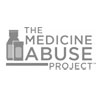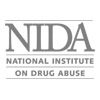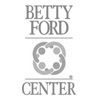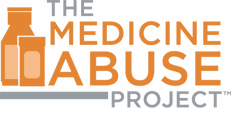Every day, 2,500 teenagers use a prescription drug to get high for the first time. Half of teens experiment with at least one illicit drug before graduating high school; and prescription medications rank second only to marijuana on the list of substances they misuse — more than crack, cocaine, ecstasy, heroin and meth combined. And unlike marijuana, prescription drug abuse kills. The primary reason prescription drug abuse is so prevalent is access. Most teens get their prescription drugs for free, from home medicine cabinets—either at their own home or a neighbor’s. Even if you feel sure that your own child would not raid your medicine cabinet, can you really be so sure about friends they might invite over?
Teen Addiction
Teen prescription drug misuse is not just “harmless experimentation”. Most sedatives, stimulants and prescription painkillers are addictive. Adolescents are particularly vulnerable to faster onset addiction due to their physiological development. For teens, experimentation can quickly turn to addiction. And with prescription drugs, even casual misuse can have deadly results.
A Deadly Trend
Prescription drug abuse is growing in popularity among teens, and is referred to by teens as “Pharming”. In fact, the number of kids abusing prescription painkillers has increased by 500% in just 15 years. A growing and disturbing trend is the “pharm party”, where teens will bring whatever prescription, sometimes even OTC meds they can grab from their parents medicine cabinets, and dump them into a large shared bowl. Partygoers then grab a handful of the mixed medications and take them to get high. Unfortunately, these “Russian roulette” combinations are often extremely dangerous, and can easily lead to hospitalization, permanent organ damage, or death. Besides the dangers of the drugs themselves, drugged teens are at much higher risk of accidents and sexual abuse.
Overdose and Deadly Drug Interactions
Taken as prescribed and when necessary, prescription drugs play an important role in medical care. But when abused, the results can be extremely dangerous, even deadly. Unfortunately, many teens believe that because prescription drugs are legal, they are safe to abuse. This couldn’t be further from the truth. Common prescription painkillers such as Vicodin and Percocet contain large amounts of acetaminophen, which can easily cause permanent or fatal liver damage when taken above recommended dosages, or even at recommended dosages when combined with alcohol. In fact the FDA recommended that these drugs be removed from the market in June of 2009, due to the high potential for liver damage when abused. Each year, acetaminophen overdose is linked to 42,000 hospitalizations, many from abuse in prescription formulations. Abuse of prescription drugs is also a common cause of respiratory arrest and heart failure, especially when taken above recommended quantities, or mixed with other drugs or alcohol—as made clear by the recent celebrity deaths of Michael Jackson, Heath Ledger and Anna Nicole Smith.
A Growing Danger
According to a recent report by the CDC, poisoning—which includes drug overdoses but not adverse reactions to prescribed drugs taken correctly— has recently overtaken firearms as the second leading cause of accidental death, just slightly under motor vehicle accidents. And while the death tolls for motor vehicle and firearms have greatly declined from 1979-2006, deaths from poisoning during that same period have more than doubled. In a second report on children under 18, the CDC said that prescription and over-the-counter medications account for almost 7 out of 10 emergency room visits. Each year more than 71,000 children ages 18 and younger visit hospital emergency rooms for unintentional medication overdoses. Emergency room visits were 10 times more common for unsupervised medication ingestions than errors by a parent or caregiver. You can help protect kids of all ages by keeping prescription and OTC medications safely locked up, and dispensing yourself when necessary. It’s not a matter of trust, just as insisting upon safety belts isn’t a reflection of driving skills—it’s simply protecting your kids from known and growing dangers.
Better Off Safe helps protect teens from prescription drug experimentation, addiction, or overdose by reducing opportunity. Keeping prescription and even OTC drugs in Better Off Safe locked cases and monitoring any dosage to your kids will help protect them from both intentional and accidental overdose or misuse.







